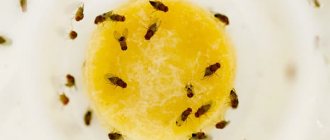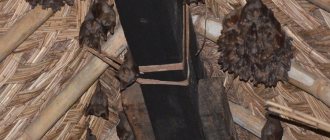Greetings, our dear readers. It's time for cleaning, spring is approaching, we are doing a total cleaning of the apartment. In addition, the coronavirus is spreading in our country, and I see that this topic has become more relevant than ever.
Therefore, the following question arose: how to disinfect an apartment, but not go to extremes. The most important thing is that the recommendations described below will come in handy not only when a pandemic is declared in the world, but also when seasonal flu and ARVI are just going around. It is also important to understand that if there are no sick people in the apartment, you should not go to extremes and rub the entire apartment with an antiseptic twice a day.
We analyzed the recommendations of Rospotrebnadzor and our parents. I also read a little about cleaning traditions in other countries. Here I’ll tell you straight - different countries have their own attitude towards cleaning and dirt in general. It is essentially impossible to say which is the cleanest or dirtiest country in the world. Everywhere there is a culture of frequency and everyone perceives it differently. So everything should be within reason.
My wife cleans the house on average 3 times a week, this includes dusting, washing the floors and hallway. But we do general cleaning of the apartment twice a year: in spring and autumn.
First, let's figure out where and in what cases it is necessary to carry out cleaning or disinfection, and then we will decide how to carry it out.
How to disinfect an apartment during seasonal epidemics
Let's start from the very beginning. When there are no epidemics and everyone in the house is healthy, then wet cleaning is enough to do 3 times a week. There is simply no point anymore, just a waste of time without the desired effect.
Now we need to understand how long viruses or bacteria last on surfaces.
Viruses can live on surfaces from several minutes to several days. However, they must be in a humid environment. If the environment is dry, then even the most persistent viruses lose their effectiveness in infecting quickly enough. To reproduce viruses, cells and microorganisms are needed. And not just any kind. There are viruses that do not harm humans.
Bacteria - everything is much more complicated here, they remain active on surfaces longer, any nutrient is enough for them and they need moisture. In a dry environment they also die quickly. Moreover, if the environment is aggressive, then the bacteria are able to protect themselves with a dense shell. called a spore. The bacterium can then revive when it returns to a favorable environment.
Based on the above, we understand that disinfection is necessary; nothing will disappear by itself.
The most important thing starts from the threshold, especially during the period of exacerbation of seasonal diseases:
- You need to undress and take off your shoes at the door. In street traffic, do not go further than the threshold.
- We hang street clothes in the hallway and do not take them into other rooms.
- Clothes worn in a public place, at work... generally outside the home should be kept separate from home clothes and not touch each other. In other words, at home we wear home clothes, when we go out the door we put on street clothes. These two types of clothing should not touch each other.
- After taking off your outer clothing, immediately washed your hands and face with soap.
Some say, even doctors, that you need to wash your nasal cavity with soap too. I don't think this is correct. This can only harm the nose, because it is the very first mechanism, or rather a barrier, on the way of viruses and bacteria into the body. Enough to blow your nose.
- If you were wearing a mask outside, we immediately throw it away.
- Every evening, wash your shoes with antiseptic and dry them.
- The threshold should also be washed with an antiseptic, after removing all the dirt.
Close-up Of Worker Cleaning Electric Hob At The Countertop With Cloth
Next, we will clean the entire room using antiseptics (we’ll talk about them below):
- Wash all the door handles you touch. It’s easier to say all the handles, especially on the front door.
- All switches in the house.
- Handles and doors of cabinets, cabinets, chests of drawers and the like.
- Chairs , especially backrests, not upholstered with fabric or porous material (this is important).
- Desk .
- Coffee table and other hard surfaces. For example, open shelves, lids of chests of drawers, bedside tables and other similar things.
- Kitchen countertops .
- Household appliances , more precisely control panels, buttons and knobs. Places where we frequently touch with our hands
- Faucets and sinks.
- Toiletries (toothbrushes, combs, etc.).
- Toilet and Bathroom , toilet, shower, bathtub, sink, floor and everything touched.
This is something that definitely needs to be disinfected. Moreover, if there are no sick people in the house, then it is enough to carry out disinfection once a day or once every two days.
But if there is a sick person in the house, then this is done at least twice a day. This is done so that all family members do not get sick and then the recovered person does not get sick again.
Particular attention to personal hygiene items, gadgets and dishes. We must clean them after each use.
In addition, you need to do the following daily:
- We ventilate all rooms 2-3 times a day. If everyone gathers at home after work, then it is enough to ventilate it once, before going to bed. If there is a sick person, then we ventilate that room 4-5 times a day.
- We use quartz lamps. They come in open and closed types. Today you can easily buy them in the store. The closed type of devices is best. They are more expensive, but safer, they can be used in the presence of people (all according to the instructions). If there are no sick people in the house, then you don’t need to use it every day; if there is a sick person, then we do it twice a day or according to the instructions for the device.
When we do general cleaning (twice a year), we wash absolutely everything with light antiseptics, including every toy (just not soft ones and those without fabric or porous surfaces).
standards, at least roughly adhere to
It is important to understand that you should not make the apartment too hot and monitor the humidity, not allowing it to rise too much for a long period.
The cleaning itself must be carried out using gloves, which we then either throw away or disinfect. If you have done light cleaning with just your hands, be sure to wash with soap and disinfect with hand sanitizer.
Don't forget about pets, they can simply treat their paws with an antiseptic after cleaning. If the animal goes outside, wash its paws and belly after each trip outside.
How to carry out wet cleaning in an apartment from viruses and bacteria
Disinfection in the room should be done with a chemical antiseptic. Today there are a lot of active antiseptics on store shelves. The main thing is to read the instructions on the bottle before purchasing. It should say what items the product can be used for, how it should be diluted, or whether it is already ready for use, and so on.
Attention! The antiseptic must be harmless to humans. This means that it can be used in the presence of a person. This doesn't mean it doesn't work well!
There are actually a lot of such chemicals, but bleach is not so safe. The most important thing is to follow the dosage! Bleach not only has a pungent odor, but also irritates the mucous membranes of the nose, eyes, larynx, and so on. Let's tell you a little more about it.
Typically, bleach is used to kill particularly resistant bacteria, such as tuberculosis bacillus. But the solution must be made quite caustic. We recommend using bleach only on floors and places where a sick person comes into contact (door handles, switches, etc.).
The safest thing is whiteness; it is a ready-made bleach solution and can be used in the presence of a person. The tablets are just as easy to use. Throw it in a bucket of water, dissolve it and you can wash the floors.
Bleach is also sold in powder form. 30 g of powder is enough for 10 liters. We dissolve and wash floors, walls, tiles, doors and furniture handles, countertops and the like. In this case, all rooms should be ventilated after cleaning. But the whole family, especially children, should spend an hour or two walking in the fresh air while the apartment is ventilated.
A 10% stock solution is also used for disinfection. It needs to be infused for more than a day, and then diluted for specific needs. But this is the last century, to be honest. We tried this once and realized that we shouldn’t do this at home, it could simply harm our mucous membranes. Instead, you need to choose another chemistry that is more harmless to people.
An alcohol-based antiseptic is also used, which you can easily make yourself. To do this: take medical ethyl alcohol (250 grams), hydrogen peroxide (15 grams) and glycerin (5 grams). Mix until smooth and add distilled (boiled) water to a total volume of 300 grams and you can treat all surfaces, including hands.
You can also use a vinegar solution to disinfect objects and household appliances. To do this, take 1 part 9% vinegar and 1 part boiled water. In other words, we dilute 1:1. If you have 70% vinegar, then dilute it 1:7, where it is 1 part vinegar and 7 parts water. We carry out cleaning with gloves.
There is also citric acid, but it is more suitable for removing scale, greasy stains and the like. This acid is weaker than acetic acid, so it is not entirely suitable for disinfection.
You can also make a strong saline solution of table salt. She is a good antiseptic. Only after washing do white streaks and stains remain. It can be used, but we ourselves prefer chemistry.
Don't forget to wash your clothes more often. Curtains, tulle, and soft toys can also be disinfected with chemicals. In this case, be sure to look at the instructions on how to properly dilute the solution, otherwise you may ruin the fabric.
Can a recirculator replace hand sanitizer and hand washing?
Do not be mistaken about the capabilities of the device. A bactericidal recirculator purifies the air from coronavirus, but COVID-19 is transmitted by contact and airborne droplets. The recirculator disinfects the air gradually, in parts, and not immediately throughout the room. It does not kill virus particles that can be transmitted through close contact between people.
In a room where a bactericidal recirculator operates, you still need to treat surfaces that people touch, use antiseptics and personal protective equipment, and keep your distance.
The device can be effectively used not only during pandemics. Thanks to the disinfecting effect, the air feels cleaner, it’s easier to breathe in the room and it’s more pleasant to stay for a long time.
How else can you disinfect an apartment?
In addition to wet cleaning, you can use other methods. At the same time, you need to understand that wet cleaning must be carried out regularly, including dusting the entire house.
- Quartz lamps. They come in open and closed types. Very effective against bacteria. Use according to instructions and situation. The safest ones are the closed type. They can also be used in the presence of a person.
- Ultraviolet lamps. Also very effective. They say that they also kill viruses. In fact, here it is worth contacting well-known companies, because I have seen a couple of devices using ordinary diodes. Here I completely doubt that such devices are effective. The diode can change the radiation wave, depending on the voltage, which is invisible to the eye, but may be useless.
- Salt lamp. It is also very effective against many viruses and bacteria. In addition, it stimulates the human immune system. This is a double benefit. Typically, one lamp can disinfect a room of up to 10 m2. So read the instructions.
- Air recirculator. It is also very effective, it has the principle of an ultraviolet lamp, but in a closed housing. It passes air through itself and purifies it. There are many different devices of varying capacity on the market.
- Humidifier. Very effective where there is a sick person. Helps speed up the healing process. Such devices not only humidify, but also disinfect the air passed through them. A very popular device in families with small children.
- Essential oils. They do not disinfect, but I included them on my list because they are very popular. And the effect is that they strengthen the human immune system. So choose the scent you like and use it indoors. Again, be sure to read the instructions.
- Ventilation of premises. I already wrote above, but I decided to remind you. Usually the premises are ventilated 1-2 times a day and always before bedtime. If there is a patient, then in that room 4-5 times a day and always before bedtime.
- Disinfection with herbs. You can fumigate, that is, set fire to the leaves of herbs such as juniper, eucalyptus, sage, lavender or other plants whose aroma has a bactericidal effect. You can simply grow indoor plants that have bactericidal properties. For example Geranium or citrus plants. "Be careful! This method can cause allergic reactions!”
- Chopped onions. It contains phytoncides. Eni are good against bacteria. But the effect of chopped onions lasts only 15-20 minutes. Afterwards just eat the onions with soup)))
Advantages of recirculators
A significant advantage of recirculators over conventional disinfection lamps is the ability to use them directly in a room with people. A conventional germicidal lamp destroys microorganisms with direct ultraviolet rays, significantly increasing the level of ozone in the air. Ozone is toxic and in large quantities can cause retinal burns. Unlike quartz treatment devices, ozone in recirculators is produced in small quantities that are safe for people, animals and plants.
Ultraviolet radiation can destroy the protein shell of viruses. And although there is no laboratory confirmation of whether the recirculator helps against coronavirus, it is believed that the device has a similar effect on COVID-19.











